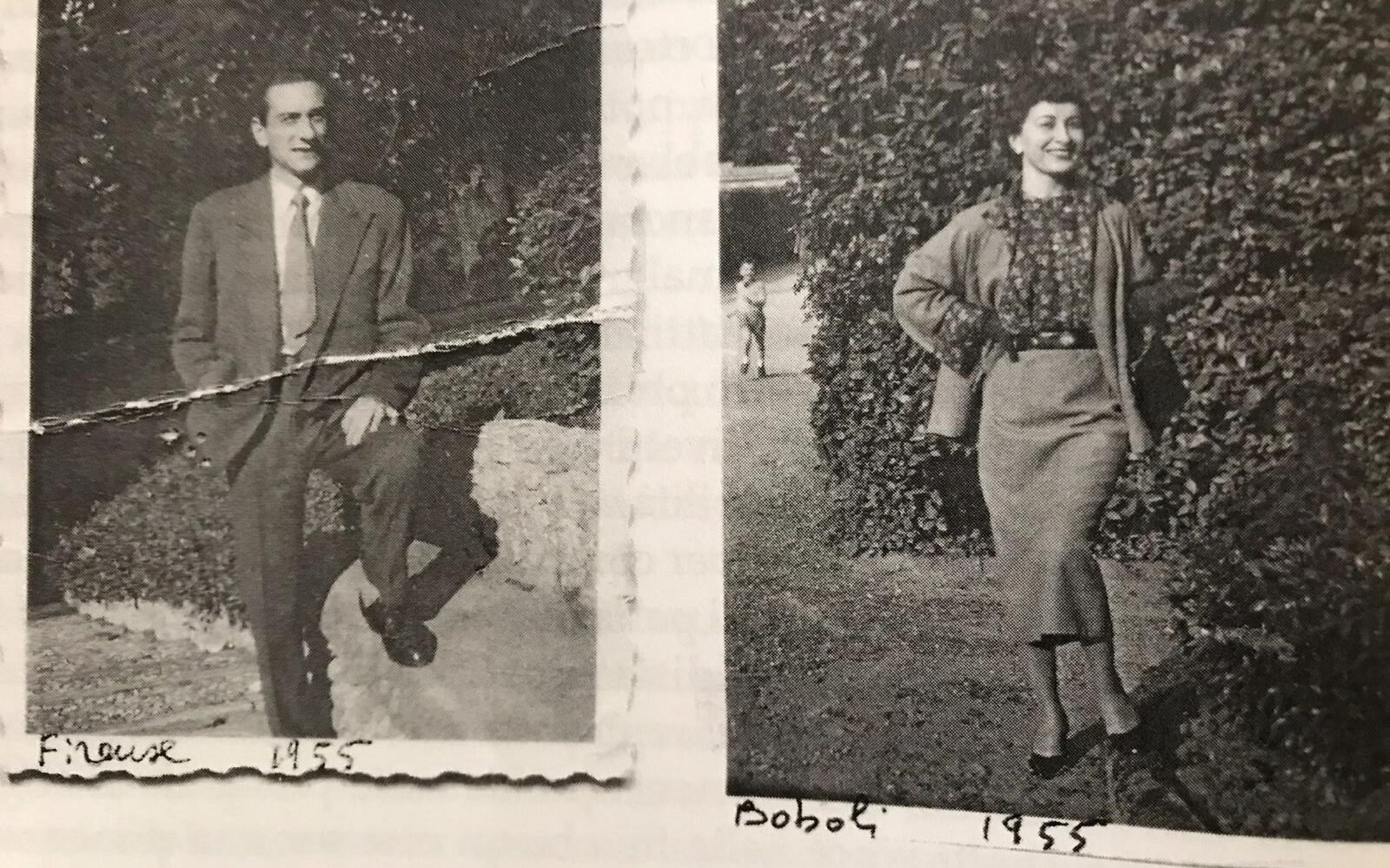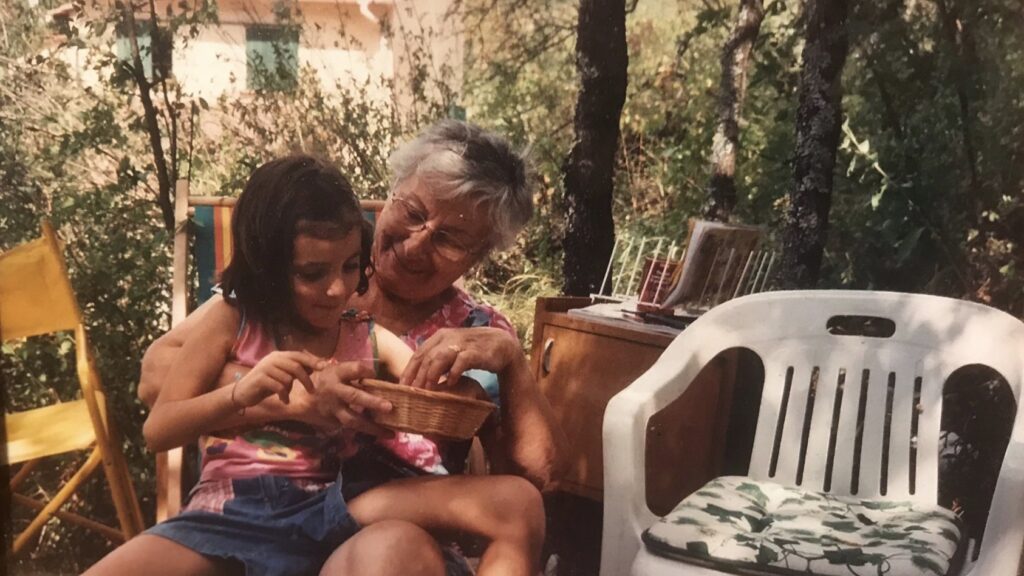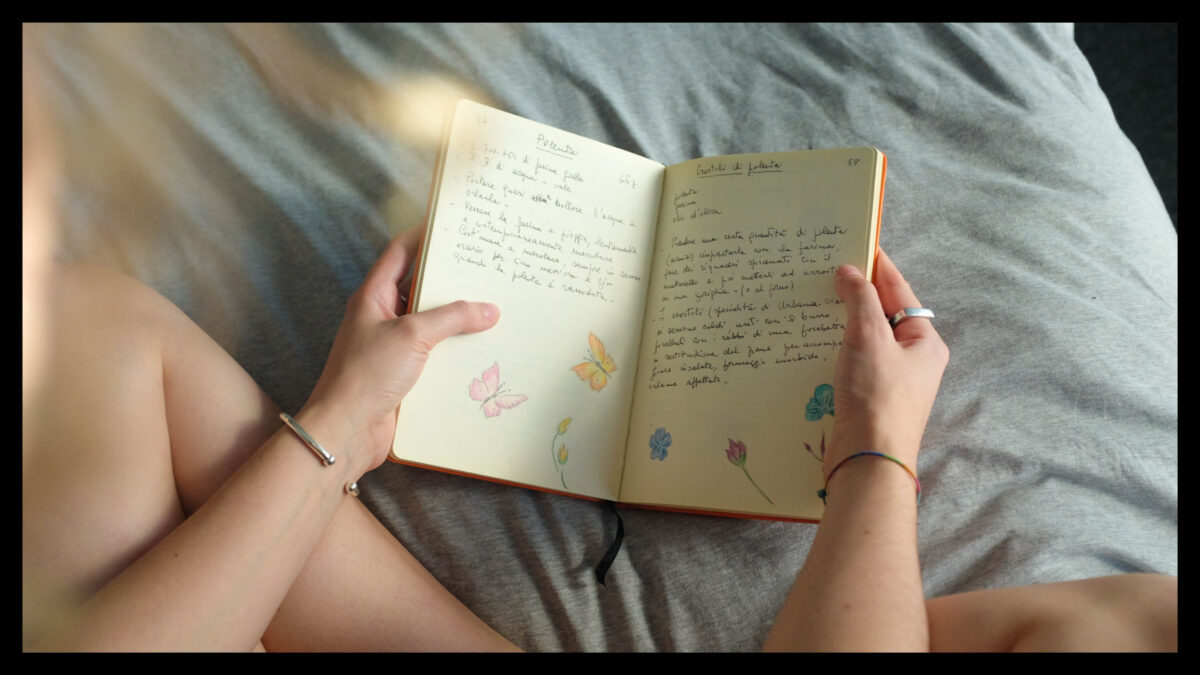Cookbooks can be like windows into people’s lives. Caterina Biondi explores her own memories of her Grandmother Nevina through a handmade recipe book passed down to her through her Italian family.
On my desk is a bright orange moleskine. There is no title, no engravings on the cover; nothing to indicate how valuable it is. My grandma Nevina made it for me. Inside is a hundred or so pages of cherished family recipes adorned with hand-illustrated flowers. It seems enchanted, and maybe it is. Leafing through the cookbook is as close I’ve ever come to time travelling or teleportation.
From my birth up until her final years, Sundays were spent at Grandma’s. My mum, dad, sister, and I would pack ourselves into the small Kia Picanto and make our way across the cobbled roads of Florence to her third-floor apartment in the suburbs. It was our version of church, but with better food and a front-row seat to Nevina’s winding stories. For all her gifts as a cook, she was an even better raconteur.

Nevina and her husband Guido, 1955. Pic: Biondi family
There was always a welcome party for the senses at Nevina’s: sliced pancetta, simmering passata, or the promising crackle of fresh meatballs acquainting themselves with a hot pan; everywhere were little knick-knacks, photos, totems to her and my grandpa Guido’s travels. Like crows and blue jays, it’s in my family’s nature to collect things.
Once dinner prep was finished we’d sit down and feast.
As with many family rituals, our Sunday gatherings adjusted and evolved as the youngest among us grew older and left the nest in Florence. My sister left first for her psychology specialisation in Turin. Then in 2017, it was my turn. I got accepted into the University of Bologna to study communication. Before each of us moved away, she would put together a book of recipes calibrated for our cooking level.
I grew up wanting to be a chef and a gardener so mine was easily the most detailed. Though the inevitable vagaries of handwritten notes doubled as the perfect excuse to call grandma and get to the bottom of why my besciamella (bechamel sauce), wouldn’t thicken, or just to catch up.
The cookbook is also a map of her life. In the Torta al Formaggio (cheese bread) there’s traces of Nevina’s birthplace in Marche (eastern Italy.) In the Gnocchi Alla Romana, a delectable fried semolina dish and family favorite, a hint to her early-twenties working in Rome as a secretary for the Socialist Party.

Spätzle, the rustic noodle dish associated with the northern border of Italy and Austria, provided an insight into harder moments in her life. Nevina’s mother died at a young age and she was left with her icy and unaffectionate father. He named her after “neve,” the italian word for snow. But years laters when my grandma met her husband Guido in Rome, she grew close with his mother and by extension, his family’s cuisine from Trento in northern Italy. That’s how we ended with Spätzle in my Tuscan cookbook. It’s a coded memory of surrogate love.
Nevina was the centre of our family, the person my sister and I wanted to model ourselves after. For a young woman like myself, her capacity to inspire was almost uncanny. So was her ceaseless desire to learn. All throughout her life, and even in her 80s, she enrolled in classes to keep her brain sharp: English courses, history, art. Those art courses led to a fascination with watercolors, which led to the illustrations in my cookbook. They also led to an Instagram account with over a hundred followers — not bad for someone born in 1927.
Most of all, Nevina lives on through her writing. Later in life, she took her diaries and synthesised them into a hefty tome that still reads beautifully. When I was unsure about a detail of her history while doing this article, I would text my dad who would open that book to the year and month we needed to clarify.
While there’s only one printed copy of her personal history, and the cookbooks are prized heirlooms, I’ll leave my favourite recipe below for you to try.
Involtini Di Verza (cabbage rolls with meat filling):
Time: 60 min
Cost: ££
Serves: 4
Difficulty: Moderate
Equipment:
- One large frying pan
- Sieve to drain
- Knife and chopping board
- Medium-size bowl
- Kitchen cloth
- A turner to flip the cabbage rolls
Ingredients:
- One head of savoy cabbage
- 300 grams of minced meat (pork & beef)
- 50 grams of butter
- 1 egg
- 50 grams of mortadella (lunch meat roll)
- 50 grams of pancetta, cubed
- ½ onion finely chopped
- 2 tbspn parmesan
- 1 tbstpn bread crumbs
- 1 clove of garlic minced
- 1 sprig of parsley minced
- ½ a glass of dry white wine
- Salt and pepper
Method:
- Remove large leaves from the cabbage, wash them, and put them in boiling water for 1 or 2 minutes till soft.
- Drain and place on a kitchen cloth.
- Mix the minced meat with the mortadella, garlic, parsley, breadcrumbs, egg, and salt and pepper in a bowl.
- Create small meatballs large (or small enough) to fill the inside of the cabbage leaves. Don’t overfill because we’ll turn these into little leafy dumplings later.
- Place a meatball onto each leaf and wrap the leaf together with a piece of string.
- In a big pan, sweat the onion, then put the pancetta in.
- When the onions start to caramelize, put the cabbage rolls into the pan and brown on both sides.
- Simmer with white wine until reduced.
- Lower heat, cook for 25 minutes. If it gets too dry inside the pan, don’t be afraid to add some hot water to moisten.
Gretel’s Tip: For home cooks, if you have some meat left over from a broth, you can exchange that for the minced meat. You can also elevate the dish by adding some tomato paste into the water as the rolls simmer in the pan. Finally, you can transform the rolls into a full meal by complimenting them with a side of mashed potatoes.
Interviewed by: Samuel Shaw

